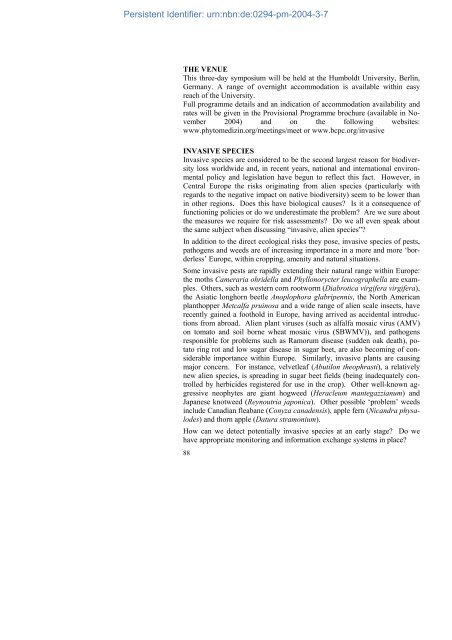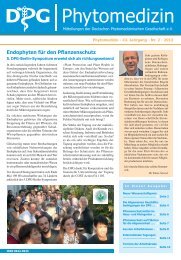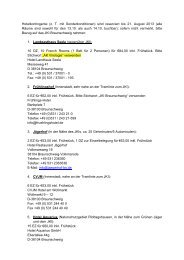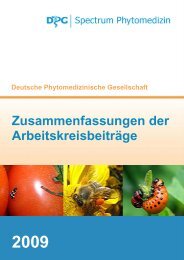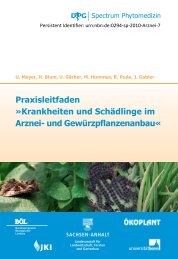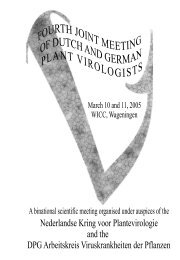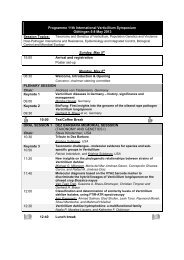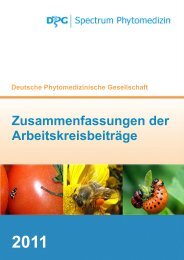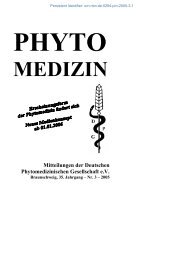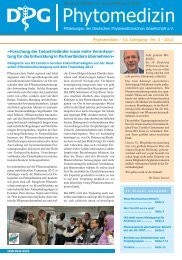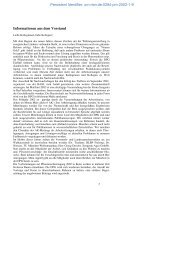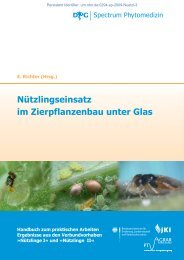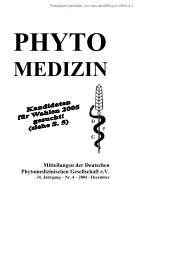03/2004 - Die DPG
03/2004 - Die DPG
03/2004 - Die DPG
- TAGS
- dpg.phytomedizin.org
Sie wollen auch ein ePaper? Erhöhen Sie die Reichweite Ihrer Titel.
YUMPU macht aus Druck-PDFs automatisch weboptimierte ePaper, die Google liebt.
Persistent Identifier: urn:nbn:de:0294-pm-<strong>2004</strong>-3-7<br />
THE VENUE<br />
This three-day symposium will be held at the Humboldt University, Berlin,<br />
Germany. A range of overnight accommodation is available within easy<br />
reach of the University.<br />
Full programme details and an indication of accommodation availability and<br />
rates will be given in the Provisional Programme brochure (available in November<br />
<strong>2004</strong>) and on the following websites:<br />
www.phytomedizin.org/meetings/meet or www.bcpc.org/invasive<br />
INVASIVE SPECIES<br />
Invasive species are considered to be the second largest reason for biodiversity<br />
loss worldwide and, in recent years, national and international environmental<br />
policy and legislation have begun to reflect this fact. However, in<br />
Central Europe the risks originating from alien species (particularly with<br />
regards to the negative impact on native biodiversity) seem to be lower than<br />
in other regions. Does this have biological causes? Is it a consequence of<br />
functioning policies or do we underestimate the problem? Are we sure about<br />
the measures we require for risk assessments? Do we all even speak about<br />
the same subject when discussing “invasive, alien species”?<br />
In addition to the direct ecological risks they pose, invasive species of pests,<br />
pathogens and weeds are of increasing importance in a more and more ‘borderless’<br />
Europe, within cropping, amenity and natural situations.<br />
Some invasive pests are rapidly extending their natural range within Europe:<br />
the moths Cameraria ohridella and Phyllonorycter leucographella are examples.<br />
Others, such as western corn rootworm (Diabrotica virgifera virgifera),<br />
the Asiatic longhorn beetle Anoplophora glabripennis, the North American<br />
planthopper Metcalfa pruinosa and a wide range of alien scale insects, have<br />
recently gained a foothold in Europe, having arrived as accidental introductions<br />
from abroad. Alien plant viruses (such as alfalfa mosaic virus (AMV)<br />
on tomato and soil borne wheat mosaic virus (SBWMV)), and pathogens<br />
responsible for problems such as Ramorum disease (sudden oak death), potato<br />
ring rot and low sugar disease in sugar beet, are also becoming of considerable<br />
importance within Europe. Similarly, invasive plants are causing<br />
major concern. For instance, velvetleaf (Abutilon theophrasti), a relatively<br />
new alien species, is spreading in sugar beet fields (being inadequately controlled<br />
by herbicides registered for use in the crop). Other well-known aggressive<br />
neophytes are giant hogweed (Heracleum mantegazzianum) and<br />
Japanese knotweed (Reynoutria japonica). Other possible ‘problem’ weeds<br />
include Canadian fleabane (Conyza canadensis), apple fern (Nicandra physalodes)<br />
and thorn apple (Datura stramonium).<br />
How can we detect potentially invasive species at an early stage? Do we<br />
have appropriate monitoring and information exchange systems in place?<br />
88


